OUTLOOK
Summer is almost here and though the weather forecast for the weekend has changed and doesn’t look as good around Vancouver as we expected, the 14-day trend has warmer weather coming early next week. The interior also looks warmer and we expect good fishing this weekend.
We had a comment in the video version of the report last week asking for some more details on the local freshwater scene and Alex has a piece going over the general opportunities you can expect as things warm up in the summer. Thanks for the questions keep them coming! For those in the interior Brendan has the latest from his trip up that way yesterday.
We have a Capilano update and though this fishery is always a challenge we have had some positive reports this week.
Also, Andre has a cool fly video for those of you working to fill up your fly box so be sure to have a watch of that one this weekend.
On the saltwater front we have had numerous press releases from DFO today and are currently awaiting updated notices in relation to the chinook fishery this summer. Jason will review all the information as soon as it is received today and we will have a special chinook mailout tomorrow afternoon which will include a summary of the regulations and his findings. So, keep an eye on your inbox for that special mailout tomorrow.
In this week’s video version of the report Matt will go over all the reports and weather and how it will affect your fishing this weekend.
CLASSES AND COURSES
Join us in the virtual classroom this month! Matt will be back teaching two classes this month!
Introduction To Fly Fishing Trout Streams
Stalking trout on mountain streams defines fly fishing. In this course we will teach you the fundamental techniques for fly fishing trout streams; dry fly fishing, nymphing, and streamer fishing. This course will get you as close to being Brad Pitt (River Runs Through It) as you will ever be! This course is comprised of one 3hr evening seminar.
Date: June 23, 2020 – Zoom Seminar
Time: 6:30pm
Cost: $50.00+GST
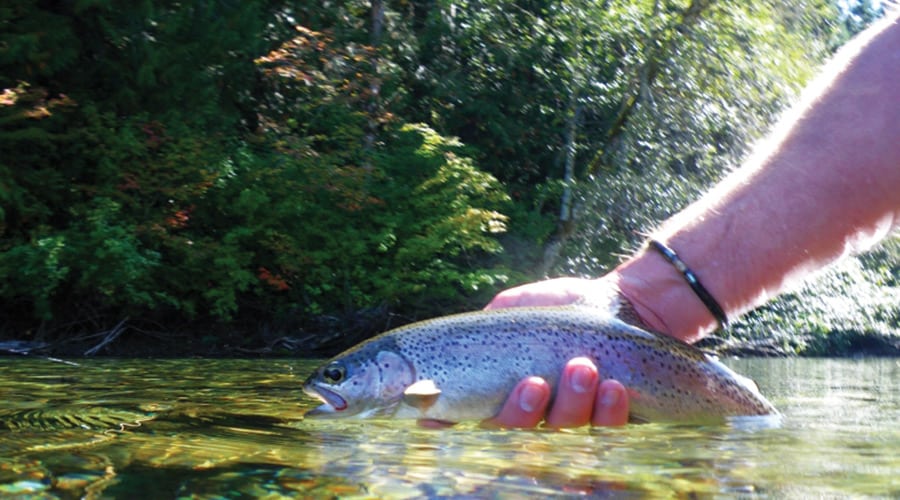
Introduction To Fly Fishing
This course was specifically designed to give the new fly fisher the basic knowledge, casting skills and fly fishing strategies to effectively fish our local BC waters. This course is comprised of two sessions; 3hr evening seminar and a 3hr casting session.
Dates: Zoom Seminar June 22. Casting June 28
Seminar Time: 6:30pm – 9:30pm
Casting Time(s): 10am – 1pm or 1:30pm -4:30pm
Cost: $150.00+GST
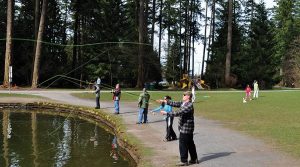
FRESHWATER FISHING REPORTS
Capilano River Fishing Report
Even after all of the rain we got last week, the Cap is still fishing relatively slow. We’ve been getting reports of lots of fresh fish coming through each high tide, yet they are notoriously tight lipped. Unsurprisingly, the best reports we’ve had have all been coming from the Cable and Dog Leg pools. The majority of fish have been coming on bait, but subtle artificial presentations have been fooling the ones you can’t feed.
I’d suggest sizing down your presentations to prevent spooking these spawners away from your spot. Small colorado blades, 1/4oz float jigs and wool are always great choices for finesse presentations. For the fly guys, your best shot is still olive wooly buggers or smaller sculpin patterns.
As always with this system, your best chance in the pools is going to be at first light. Going early gives you two main advantages, you have untouched fish that are more likely to be fooled, and beating the droves which flock to the system around midday. If you’re not able to get out as early as you’d like, take a peek at the tides as there have been fresh coho coming through the lower sections of the river like clockwork.
Hopefully with the rain coming this weekend we’ll get the dam opened up to push some more fish up the system, so keep an eye on the river levels.
Aidan Munro
STILLWATER FISHING REPORTS
Local Lakes Fishing Report: Summertime Blues
It’s hard to believe but summer is just around the corner. I know it hasn’t felt that way with the cooler temperatures and rain (not to mention that kids have only been in school voluntarily), but July is only a couple of weeks away and this usually brings us to the hottest few months of the year. While the spring “season” has been extended so to speak due to the lack of heat, it’s definitely coming and it brings its share of pros and cons when it comes to fishing the local lakes.
The water temperatures will be the hottest they will be all year and depending on the species you are targeting; this may mean you will have to do some adjusting. Trout prefer cooler water so under the mid-day sun they are pushed down deep and can be finicky, almost dormant. This presents a couple of problems for shore anglers that can’t reach these fish or for smaller bodies of water, such as most of our stocked lakes, that warm up quickly and don’t offer much in terms of deep water refuge.
How does one target these summer trout? If you have access to a watercraft, this is going to be your first choice. Trolling down deep with lures or flies is best. Follow contour lines near shallow shoals where there may be forage in form of bugs or baitfish. Lures like Flatfish, Apexes, Bingo Bugs, Wedding Bands, and Mini G’s behind a willow leaf are all good options. You can either weight them down with some trolling weights or use a Scotty Lake Troller, which is effectively a mini version of a full-fledged saltwater downrigger. In combination with a 2lb cannonball, you can get down to depths unachievable with just a lead weight. Flies like Doc Spratleys, Carey Specials, Wooly Buggers, and Ruby Eyed Leeches are great choices for fly anglers on a fast full sinking line.
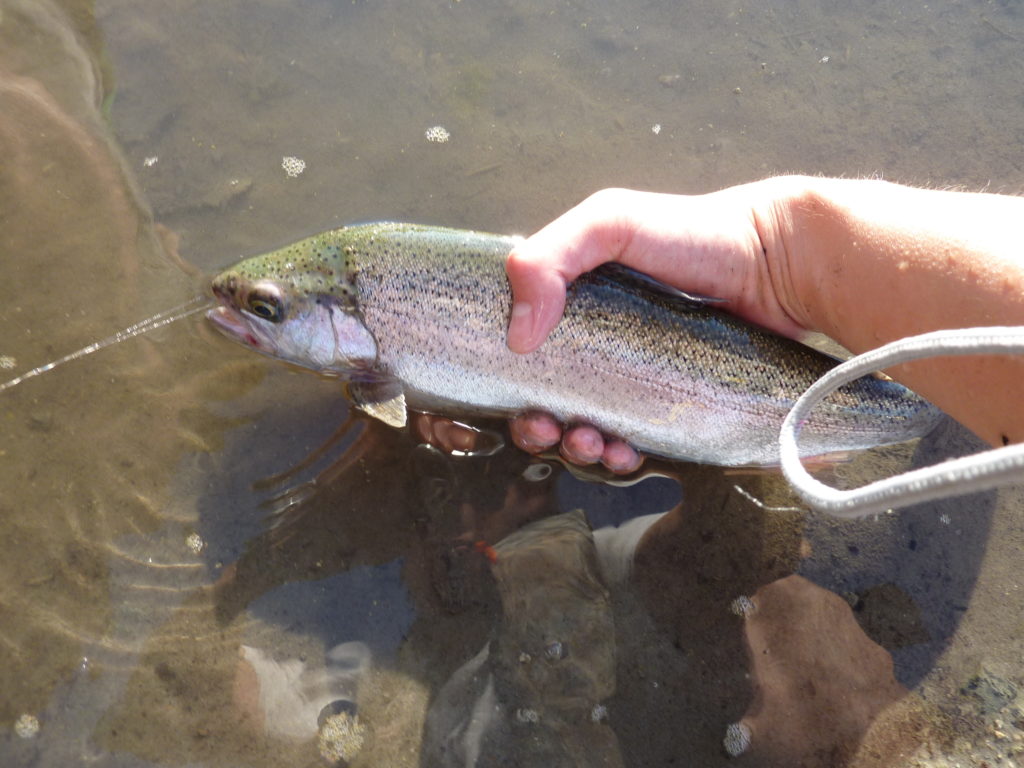
If you are shore bound, trout fishing is still possible but you will want to find access to deep water and slow your presentations down. Fishing off the bottom with powerbait is a great choice if you want to kick back and relax while fishing. Lure fishing is still an option too, but it is a good idea to slow everything down. Slow rolling a spinner or spoon along the bottom can produce, or fishing more vertical presentations like a hair jig or curly tail grub on a jig are good alternatives. For flies, try suspending a scud or balanced leech under an indicator.
An alternative to trout fishing in the summertime is to fish for spiny-rayed species like bass and sunfish. I understand this is not everyone’s cup of tea, but it does offer another way to get that tug on the end of the line. Unlike trout, bass and sunfish get more active in warmer water and can be found in relatively shallow water in the middle of a hot summer day. This makes them viable options for shore-bound anglers when trout fishing just isn’t possible.
While some do stay up shallow in this context, largemouth bass will still stick close to structure that offers shade. Lilypads, fallen trees, docks, mats, and submerged vegetation all are prime spots. As such, weedless presentations are highly effective. Hollowbody frogs, and texas rigs are good starting points because of their weedlessness. Other options such as spinnerbaits, curly tail grubs, walking topwater baits, and crankbaits are also great as open water presentations that can still be fished in the vicinity of structure. It is also possible to fly fish for them too. Weedless popper flies or big streamers that imitate a fleeing sunfish or juvenile bass will get the job done.
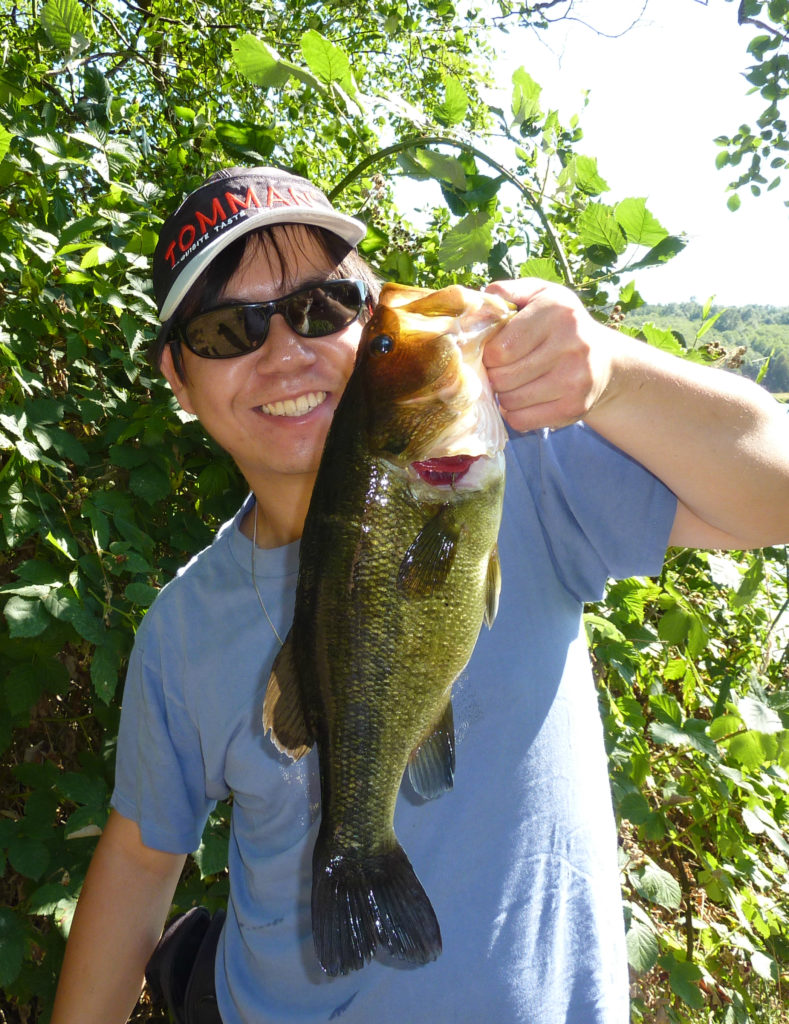
As an ultralight alternative, sunfish and black crappie are typically aggressive in warm water and will readily take most presentations. Bait such as worms, krill, and powerbait work well. They can also be taken on a myriad of small flies be it dries, nymphs, or streamers. What they lack in size and intelligence they make up with in spunk, so while it can be a bit brainless it is also the perfect excuse to break out the 2 and 3wt rods.
Regardless of which fishery you find yourself gravitating towards, keep in mind that the blazing hot summer sun affects them all differently but it still puts a damper on the fishing. If possible, head out for early morning or late evening when the sun isn’t directly on the water. Fish of all species will be more active during these windows and will be aggressively feeding before retreating to their mid-day haunts. If your only option is to fish in the afternoon, slow your presentation down and try to go more finesse.
We have lots of expertise in these fisheries between those of us at the Shop so come on down and visit us to get geared up for SUMMER!
Alex Au-Yeung
Interior Lakes Fishing Report
Well it looks like we are in for our first hint of some real June weather this weekend and next week. The past week or so the barometer was all over the place with lower temperatures and storm systems making anglers work for their catch. Fishing was good in shorter periods throughout the day when the weather decided to settle down for a while. That being said, we have had some better reports the past 48 hours as temperatures began to rise and stabilize.
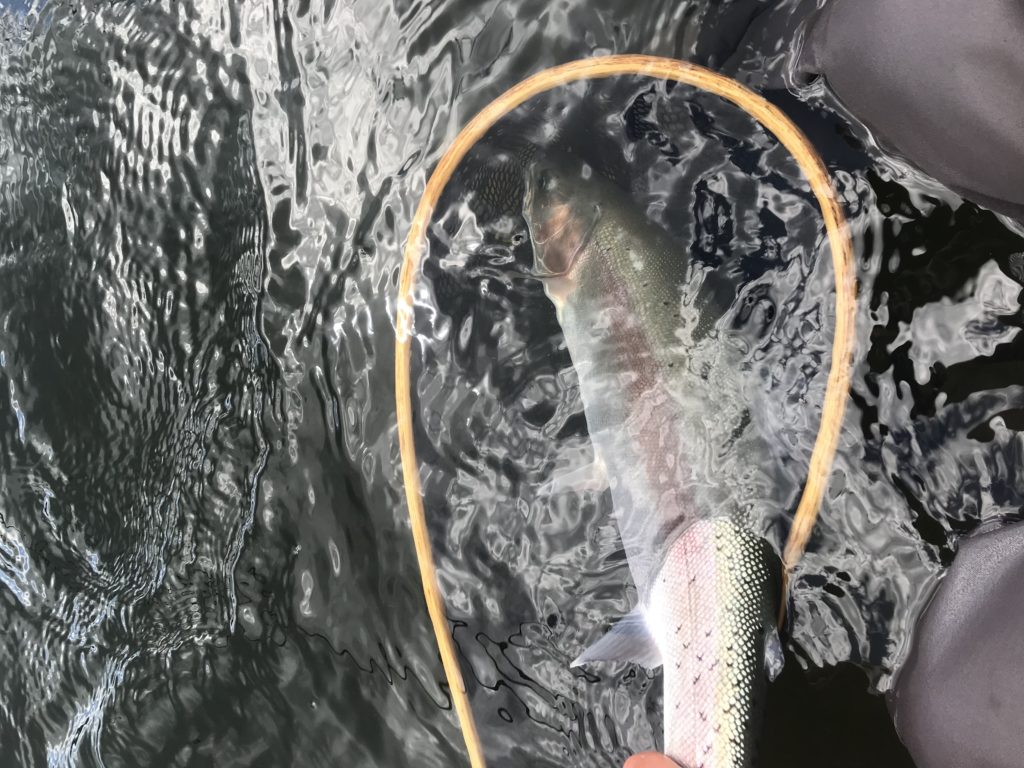
Most lakes in the 2500-3500ft range will be in a slight transition phase as chironomid hatches begin to slow down with mayfly, damsel and caddis hatches becoming more prominent. However, don’t forget your chironomids as bomber hatches are common this time of year. If you still want to watch the indicator drop, lakes in that 4000ft range (typically a little slower to warm up) will still have consistent chironomid hatches throughout the day.
Looking ahead to this weekend, June is in full swing now and so will be the mixed bag of hatches that come with it. It’s fairly common to see chironomid, mayfly, damsel and caddis hatches all in the same day. Therefore, coming prepared with multiple set-ups for different scenarios is key. This time of year, I will typically bring a rod for indicator chironomid fishing, one for fishing mayflies/damsels and sometimes one set-up for dries. On my chironomid set-up I run anywhere from a 15-25ft custom fluorocarbon leader. Longer is key this time of year as most fish feeding on chironomids will be in deeper water. Don’t be afraid to fish your patterns suspended further off the bottom too as fish moving into deeper water to feed will come off the bottom into food travel lanes. When targeting fish feeding on mayflies and damsels a floating line with a long 12ft fluorocarbon leader or an intermediate line will enable you to effectively fish the shallow shoals where they emerge. Most mayfly and damsel fishing is done on shallow 3-10ft shoals using a very slow retrieve.
An example of a day with several hatches is my trip from Thursday this week. I fished a lake near 3200ft and upon arriving at 10am a caddis hatch was in full swing. I began the day fishing a shallow shoal in 5ft of water slowly stripping a caddis nymph pattern. I hooked several fish this way and even managed a few on a larger travelling sedge dry fly. Later in the afternoon the caddis hatch died down and chironomids began emerging in 20ft of water. I re-anchored in deeper water, brought out my chironomid rod and proceeded to hook more fish. My dad was also able to hook a few on chironomids too, breaking in his new stealth pro. As you can see there is no clear hatch or be all method that will out fish another this time of year. Being observant of bug activity and where fish are jumping/rolling (depths) will pay dividends allowing you to switch methods and hopefully start hooking fish.
Brendan Guraliuk
SALTWATER FISHING REPORTS
As we mentioned above in the outlook we have had numerous press releases from DFO today and are currently awaiting updated notices in relation to the chinook fishery this summer.
Jason will review all the information as soon as it is received today and we will have a special chinook mailout tomorrow afternoon which will include a summary of the regulations and his findings. So, keep an eye on your inbox for that special mailout tomorrow.




